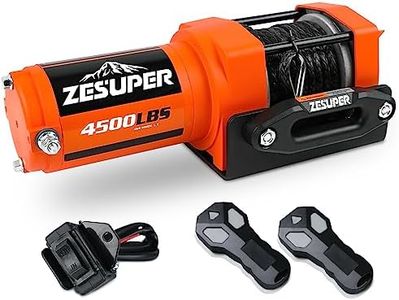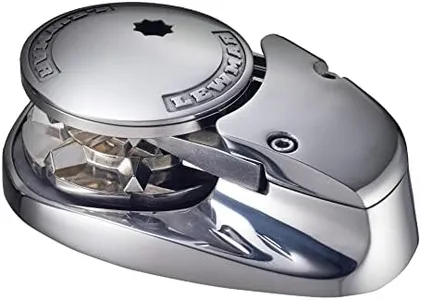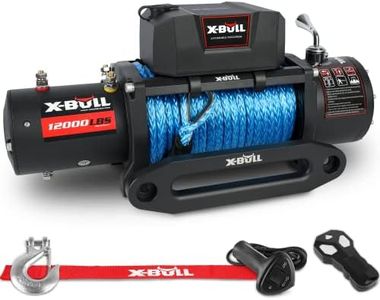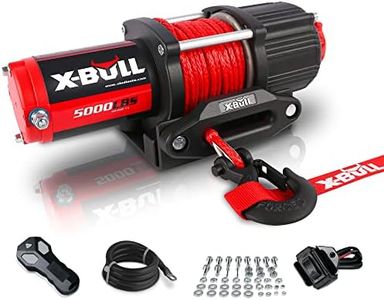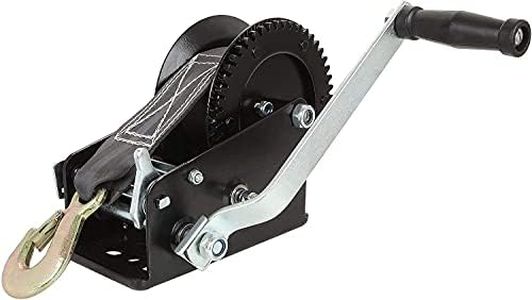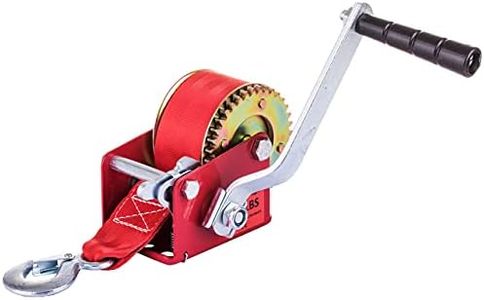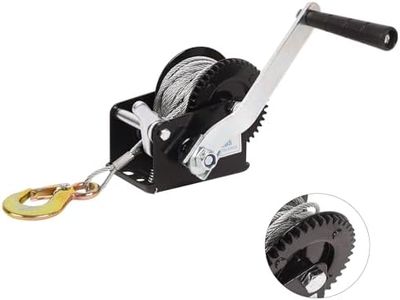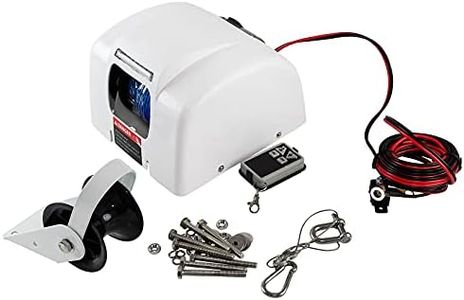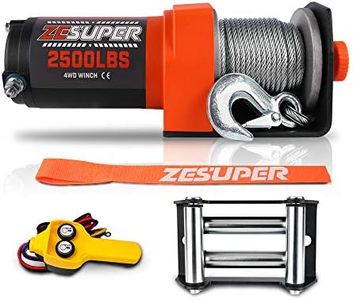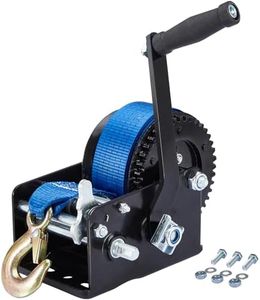We Use CookiesWe use cookies to enhance the security, performance,
functionality and for analytical and promotional activities. By continuing to browse this site you
are agreeing to our privacy policy
10 Best Boat Winches
From leading brands and best sellers available on the web.Buying Guide for the Best Boat Winches
Choosing the right boat winch can make your boating experience much smoother and safer. A winch is a mechanical device used to pull, lift, or adjust the tension of ropes, cables, or chains, typically for launching, retrieving, or securing a boat. When picking a winch, it’s important to match the winch’s capabilities to your boat size and intended use, ensuring you have enough power to do the job with reliability and ease. Carefully considering how and where you'll use it will lead you to the best fit for your needs.Winch Capacity (Load Rating)Winch capacity refers to the maximum weight the winch can pull safely, usually measured in pounds or kilograms. This is one of the most critical specs because it determines what size boat or load the winch can handle. Smaller winches, with lower ratings, are suitable for smaller boats (up to about 2000 lbs), while heavy-duty winches serve larger vessels (boats over 4000 lbs). To choose the right capacity, check your boat's actual weight including gear and fuel, then select a winch rated for at least 1.5 times that weight for added safety and efficiency.
Type: Manual vs. Electric WinchesThe main types of boat winches are manual (hand-crank) and electric. Manual winches are powered by your physical effort and are usually lighter, less expensive, and easier to maintain, making them ideal for smaller boats or infrequent use. Electric winches use a motor and battery, offering more convenience and speed, especially helpful for larger boats or those who launch frequently. If you prioritize convenience and handle a heavier boat, electric is a smart pick. If simplicity and reliability are your focus, manual may be better.
Gear RatioThe gear ratio indicates how hard or easy it is to turn the winch handle. A higher ratio means more mechanical advantage, so it's easier to pull heavy loads, but you'll need more turns to get the job done. Lower gear ratios require more effort per turn but get the task done faster. For heavier boats or if you want less strain, look for higher ratios. For lighter boats or speed, lower ratios may suit you. Match the choice to your strength and patience level.
Line Material and LengthWinches use either straps, ropes, or wire cables, with each material offering different strengths and durability. Wire cables are strong and handle heavy weights, but they can fray over time and require gloves. Straps and ropes are safer to handle, easier to inspect, and best for medium-weight boats. The line length determines how far you can pull your boat out of the water and onto the trailer. Choose a length that comfortably covers the distance you need, with some extra for flexibility.
Mounting Style and CompatibilityThe mounting style is how the winch attaches to your trailer or boat. Compatibility is crucial because the winch must fit securely and align with your trailer’s frame or designated winch post. Some winches have universal mounting, while others require specific hardware or bolt patterns. Always check your trailer setup and ensure the winch can be installed without modification or instability. Pick a mounting option that matches your trailer to avoid hassle or unsafe operation.
Brake and Locking MechanismA winch’s brake or locking mechanism prevents the line from slipping backward and losing tension. Some winches have automatic braking, which engages under load, while others use manual locks you set yourself. Robust braking is especially important on slopes or when launching heavier boats. If extra security matters to you, prioritize strong, reliable brakes or multi-lock positions for added peace of mind.
